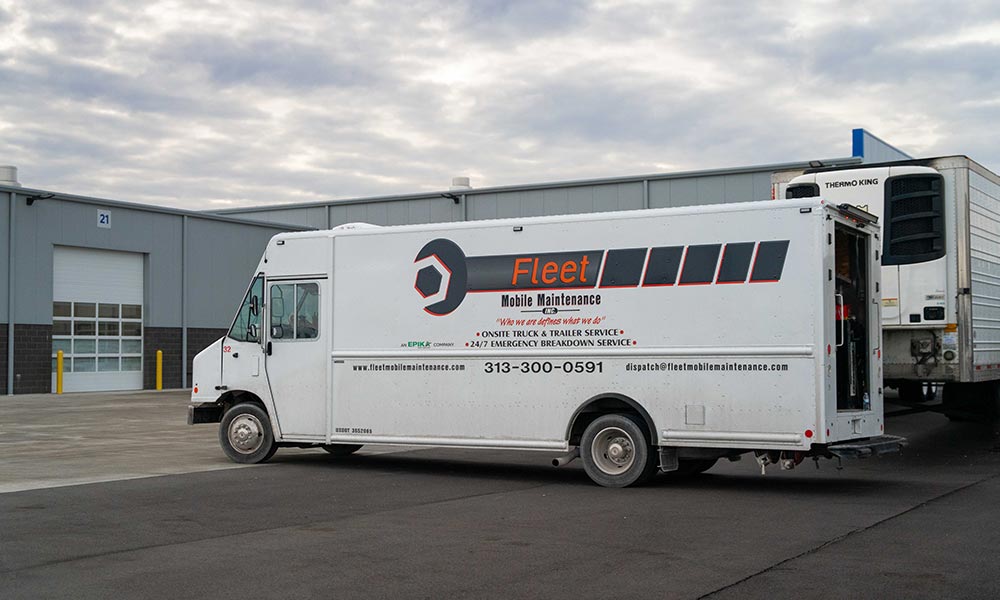Fleet Management Best Practices

Strategic Fleet Solutions have always believed that managing a fleet of vehicles goes well beyond routing and upkeep. The main purpose of fleet management best practices is optimizing the vehicle performance while cutting down costs. Companies can enhance their efficiency and reduce downtime by monitoring fuel usage, ensuring timely repairs and tracking maintenance schedules.

Fleet success starts with a solid game plan of managing fleet. It includes setting and maximizing goals with fuel usage, optimizing fleet downtime, and smart time maintenance scheduling. When you stick to proven vehicle fleet management best practices, you can run a leaner, tougher operation that gets the job done. Set a goal to track everything, from driver performance to operating expenses, in real-time. Incorporate cutting-edge advanced GPS tracking and telematics that can simplify the entire logistics process and boost the overall efficient fleet management performance. By following the top fleet management tips, you can manage your fleet of vehicles effectively.
How to Enhance Fleet Management Efficiency?
Are you questioning how to improve fleet management? Here’s the deal: it’s about getting ahead of problems, not reacting to them. Improvement of fleet management means taking on strategies that increase the lifespan of a vehicle and cut down on the costs of operation. Through preventive maintenance schedules and vehicle fleet management best practices, businesses can make sure that everything runs better and smoother. Furthermore, proper training of drivers and clear policies about fuel use and safety measures are the long-term solution to the improvement of fleet management procedures.
Want to level up your vehicle fleet management strategy? Start by leaning into data-driven insights. Telematics can tell you who’s burning too much fuel, who’s braking too hard, and which vehicles are quietly bleeding money. These technologies make it possible for fleet managers to have thorough knowledge of better vehicle utilization, and reduction on repair costs.
10 Fleet Management Tips That Actually Work
Fleet management isn’t a set-it-and-forget-it job. You’ve got to stay on top of it every day or things fall apart fast. Don’t just wonder how to manage a fleet of vehicles! Become a proactive fleet manager and boost the effectiveness of fleet operations.

Following practical fleet maintenance tips, such as creating a vehicle maintenance plan for your fleet, organizing frequent vehicle inspections, and using fleet management best practices are the most effective strategies to adopt.
1. Ensure Regular Vehicle Checks

Routine inspections keep an eye on mechanical defects of trucks before they can become expensive DOT violations and roadside breakdowns. By conducting a step-by-step inspection, it is possible to avoid accidents, lower the cost of repairs, and extend the life of the vehicle. It’s important to schedule inspections at regular intervals based on manufacturer recommendations or actual vehicle usage. Knowing how to manage fleet vehicles is key to making this process smooth and efficient.
2. Carry Out Preventive Maintenance

Conducting preventive maintenance is one of the most important fleet maintenance tips which helps keep the whole fleet operational. As long as potential issues are resolved before they become major problems, companies can steer clear of expensive repairs and costly breakdowns. Preventative fleet maintenance comes down to one guiding principle: fix it before it fails.
3. Implement Fleet Maintenance Software

Don’t just ask how to improve fleet management, but get the efficient fleet management software today. The software of fleet management is a very powerful tool for making the process much more efficient. It allows the user to keep track of the vehicle’s data, to set up a timetable for the service events, and effectively manage the costs. Automate what you can. Let this software take care of the burdening tasks so you can focus on keeping the wheels turning.
4. Record and Track Fleet Vehicle Maintenance

If it isn’t recorded, it didn’t happen. Fleet operators need to have a proper and accurate system of maintaining all the records of the vehicle to ensure the effective management of the fleet. Document everything rigorously, from service history and inspection reports to parts that have been replaced. Detailed records of the fleet management strategies and maintenance make the fleet managers capable of making the decisions on the replacement of the vehicle and the appropriate maintenance schedules.
5. Tailored Fleet Maintenance Practices for Your Industry

Every fleet is unique in its own way. A bulldozer works differently as compared to a delivery truck. The construction fleet vehicles need to go through the heavy-duty maintenance process more frequently due to the exhausting nature of the tasks they are engaged in. When managing fleet operations, the fleet of a courier firm may be more dependent on on-time delivery and fuel economy. Suppose these specific needs of the industry are considered. In that case, the fleet managers can easily adjust the scheduled maintenance of their vehicles to keep their top performance and fulfill their tasks to the fullest. Have a plan for maintaining every aspect of your work and anticipate the stress involved.
6. Adopt Comprehensive Driver Checklists

Want your fleet in better shape? Put drivers in the driver’s seat to help in effectively managing a fleet of vehicles. The driver’s checklist should include tire pressure, fluid levels, brake performance, and cleanliness. One of the ways that fleet managers can keep their vehicles in good condition is through the use of regular checklists. Following vehicle fleet management strategy will be sufficient to find and resolve minor issues before they grow into problems. It’s a simple habit that saves real money.
7. Align Fleet Size with Business Requirements

The optimization of the fleet size is a very important factor in the reduction of costs. Having too many vehicles can result in unnecessary operational expenses, and having too few can cause the inability to satisfy demand. Analyze your operational data and balance between delivery volume and efficiency. Getting those data points right can make or break how well your fleet’s sized and performing. Properly sized operations optimally utilize assets while increasing overall cost-effectiveness. You should learn about how to manage a fleet of trucks before going into business.
8. Rotate Fleet Vehicle

Letting one rig take all the hits while others sit idle is poor planning. Rotating the use of fleet vehicles can help in extending the lifespan of the vehicles and make sure that none of the vehicles are overused. Spread the load equally by not overloading or underusing any one vehicle. Balancing can have multiple positive effects including leveling mileage, lowering asset maintenance levels, and alleviating operational surprise breakdowns. The rotational system enables you to distribute maintenance costs throughout the fleet. This effective fleet management tip helps increase the overall efficiency of the operation.
9. Maximize Fleet Efficiency and Usage

Maximizing fleet usage is about making sure that the vehicles are fully utilized. Part of it is keeping an eye on the driving patterns, routing the path for fuel-saving, and keeping the vehicles from being idle unnecessarily. Advanced technology, such as GPS tracking and telematics are the efficient fleet management strategies, which help you cut waste and run tighter routes. Use them, and fleet efficiency becomes your edge.
- Create a Fleet Maintenance Schedule
Proactive vs reactive maintenance is a strategic decision. One of the primary aspects of avoiding vehicle failures and keeping your fleet running is to make sure that a regular fleet maintenance schedule is in place. Regular maintenance allows you to easily identify potential problems and extend the vehicle’s life. Ongoing vehicle maintenance results in lower downtime and gives a higher overall productivity. Understanding how to manage fleet vehicles effectively is essential to ensure these benefits.
10. Managing Your Fleet with Epika

This is where Epika steps in—to provide expert fleet maintenance and preventive services. Effective fleet management depends on timely service, vehicle reliability, and minimizing costly downtime. Epika supports fleet managers by delivering high-quality repairs and proactive maintenance that keep vehicles in top condition. Using insights from telematics and real-time performance data, we help identify issues early, reduce fuel and maintenance costs, and ensure your fleet operates at peak productivity.
Whether you’re in logistics, construction, or service delivery, Epika can help manage fleet maintenance and preventive maintenance. We help prevent the occurrences of maintenance issues on the vehicles, increasing their lifespan and incurring minimal costs for their repair. If you want to implement efficient, data-driven fleet management best practices, Epika fleet is the partner you want in the driver’s seat.
FAQ’s
What are fleet management practices?
Fleet management’s about keeping your trucks running smooth and hassle free. That means tackling vehicle maintenance, monitoring driver behavior, watching fuel expenditure, scheduling repairs, using fleet maintenance best practices to improve overall fleet efficiency.
What are the key fleet manager responsibilities?
A fleet manager is responsible for the day to day running of the fleet. He must be sufficiently aware of how to manage a fleet. Key tasks include vehicle maintenance, compliance, fuel management, scheduling of inspections, expense tracking, driver training, route optimization and using technology like GPS and telematics to improve fleet performance. Overall, it is the fleet manager’s responsibility to keep the vehicles in good condition, reduce costs and maximize efficiency.
What is the biggest challenge in fleet management?
The biggest challenge in fleet management procedures is balancing cost with performance. From handling fuel costs to timely scheduling a maintenance, reducing vehicle downtime, managing fleet size and ensuring driver safety—all these pull-on margins. The need for innovation and new technology like telematics can be a challenge especially when managing a fleet of vehicles with multiple operational requirements.
How can a fleet manager improve productivity?
As a fleet manager, implement strategies like fuel optimized routes, regular maintenance to prevent downtime, fleet management best practices for tracking and reporting, training drivers to improve safety and reduce accidents, telematics and GPS to monitor vehicle performance in real time. Do all that, and you’ll waste less, haul more, and keep rolling with confidence.
